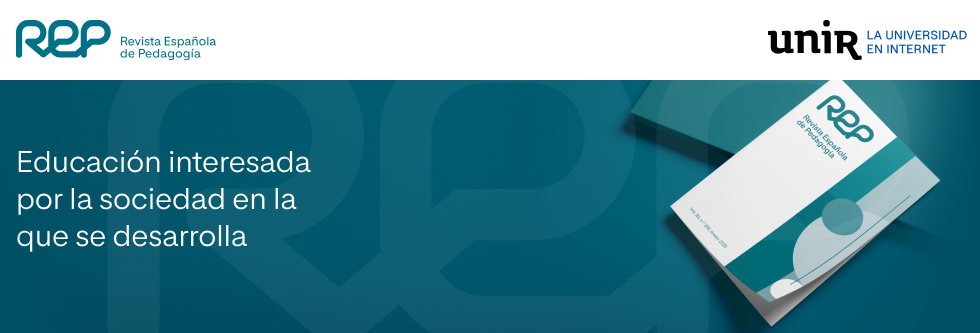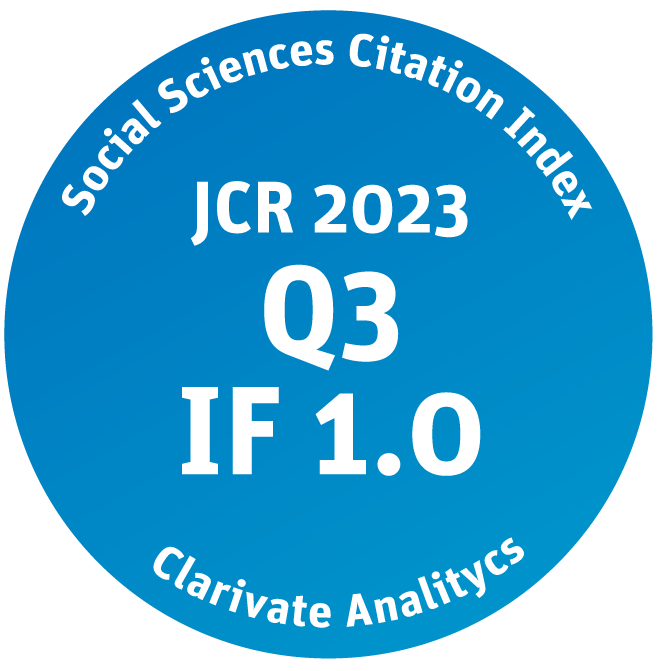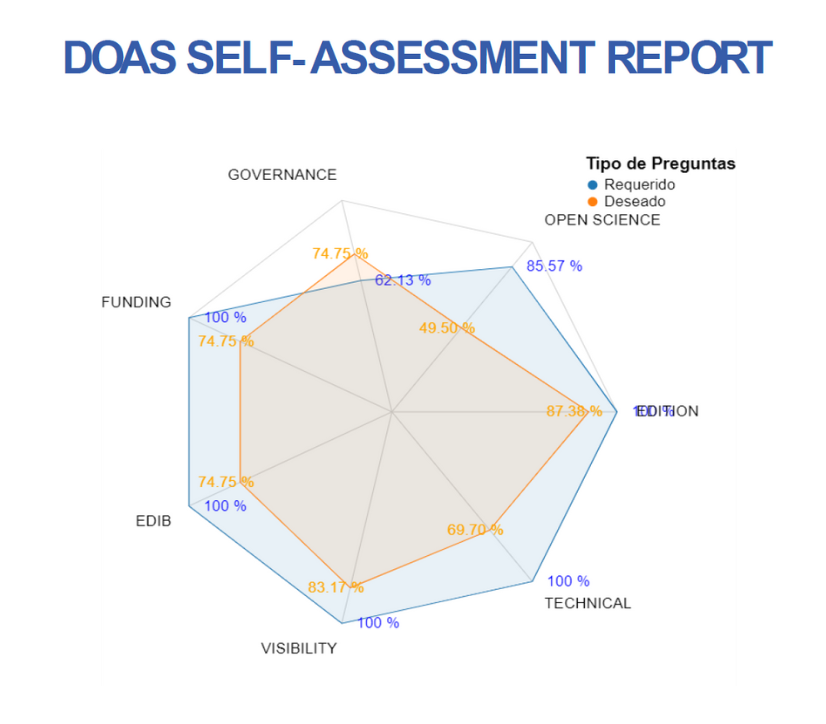Abstract
This paper shows the results of a longitudinal study on the integration of MOOCs in university classrooms and their influence on academic performance. The relationship between performance and the course design and the type of student participation is discussed. Performance has been assessed through evidence of learning, while the design and influence of the type of participation have been checked using standard instruments: TAM (Technology Acceptance Model) and IMMS (Instructional Materials Motivation Survey). Evidence obtained shows that participation in a MOOC improves learning results, and that both the type of course design (defined by an intensive use of social networks and e-activities) and active participation have an influence on academic success.
Cite this article as: Castaño-Garrido, C., Garay, U., & Maiz, I. (2017). Factores de éxito académico en la integración de los MOOC en el aula universitaria | Factors for academic success in the integration of MOOCs in the university classroom. Revista Española de Pedagogía, 75 (266), 65-82. doi: 10.22550/REP75-1-2017-04
- Keywords:
- performance
- student participation
Referencias | References
Aguaded, I., Vázquez-Cano, E., & López-Meneses, E. (2016). El impacto bibliométrico del movimiento MOOC en la Comunidad Científica Española. Educación XXI, 19 (2), 77-104. doi: 10.5944/educXX1.13217
lario-Hoyos, C., Muñoz-Merino, P. J., Pérez-Sanagustín, M., Delgado, & Parada, H. A. (2016). Who are the top contributors in a MOOC? Relating participants’ performance and contributions. Journal of Computer Assisted Learning, 32 (3), 232-243. doi: 10.1111/jcal.12127
Barak, M. Watted, A., & Haick, H. (2016). Motivation to learn in massive open online courses: Examining aspects of language and social engagement. Computers & Education, 94, 49-60. doi: 10.1016/j.compedu.2015.11.010
Breslow, L. (2016). MOOC Research: some of what we know and avenues for the future. In De Corte, E., Engwall, L., & Teichler, U. (Eds.). From books to MOOCs? Emerging models of learning and teaching in higher education (Wenner-Gren International Series, Volume 88. Portland Press Ltd), 57-67.
Breslow, L., Pritchard, D. E., Deboer, J., Stump, G. S., Ho, A. D., & Seaton, D. T. (2013). Studying learning in the worldwide classroom research into edX’s first MOOC. Research & Practice in Assessment, 8 (1), 13-25.
Brooks, C., Stalburg, C., Dillahunt, T., & Robert, L. (2015). Learn with friends: The effects of student face-to-face collaborations on massive open online course activities. In Proceedings of the Second ACM Conference on Learning@ Scale, 241-244. Retrieved from: https://deepblue.lib.umich.edu/handle/2027.42/116274
Brooks, D. W. (2012). The campus tsunami. New York Times. Retrieved from: http://www.nytimes.com/2012/05/04/opinion/brooksthe-campus-tsunami.html?_r=0
Cabero, J. (2015). Visiones educativas sobre los MOOCs. RIED, 18 (2), 39-60. Castaño-Garrido, C. & Cabero, J. (Coords.) (2013). Enseñar y aprender en entornos m-learning. Madrid: Síntesis.
Castaño-Garrido, C., Maiz, I., & Garay, U. (2015). Diseño, motivación y rendimiento en un curso MOOC cooperativo. Comunicar. Revista Científica de Educación y Comunicación, 44, 19-26.
Castaño-Garrido, C., Maiz, I., & Garay, U. (2015). Percepción de los participantes sobre el aprendizaje en un MOOC. RIED, 18 (2), 197-224. De Waard, I. (2013). Analyzing the Impact of Mobile Access on Learner Interactions in a MOOC. A Thesis Submitted to the Faculty of Graduate Studies. Centre for Distance Education. Athabasca University. Retrieved from: https://dt.athabascau.ca/jspui/bitstream/10791/23/1/Master%20thesis%20Inge%20de%20Waard20MEd%20publication%20final%20reviewed.pdf
Delgado-Kloos, C., Muñoz-Merino, P. J., Alario-Hoyos, C., Estevez, I., & Fernández, C. (2015). Mixing and blending MOOC Technologies with face-to-face pedagogies. In Global Engineering Education Conference (EDUCON), 967-971. Retrieved from: http://ieeexplore.ieee.org/stamp/stamp.jsp?tp=&arnumber=7096090
Di Serio, A., Ibáñez, B., & Delgado, C. (2013). Impact of an augmented reality system on students’ motivation for a visual art course. Computers & Education, 68, 586-596
Dillenbourg, P., Fox, A., Kirchner, C., Mitchell, J., & Wirsing, M. (2014). Massive open online courses: Current state and perspectives. Dagstuhl Manifestos, 4 (1), 1-27.
European Commission (2014). Report to the European Commission on new modes of learning and teaching in higher education. Luxembourg: Publications Office of the European Union 2014. doi: 10.2766/81897
Fidalgo, A., Sein-Echaluce, M. L., & García-Peñalvo, F. J. (2013). MOOC cooperativo. Una integración entre cMOOC y xMOOC. In Fidalgo, A. & Sein-Echaluce, M. L. (Eds.). Actas del II Congreso Internacional sobre Aprendizaje, Innovación y Competitividad, CINAIC. Madrid: Fundación General de la Universidad Politéc nica de Madrid. Retrieved from: http://gredos.usal.es/jspui/bitstream/10366/122486/1/DIA_PaperMOOCs.pdf
Fini, A. (2009). The technological dimension of a massive open online course: The case of the CCK08 course tools. IRRODL, 10 (5). Retrieved from: http://www.irrodl.org/index.php/irrodl/article/view/643/1402
García, L. (2015). MOOC: ¿tsunami, revolución o moda pasajera? RIED, 18 (1), 9-21. Gasevic, D., Kovanovic, V., Joksimovic, S., & Siemens, G. (2014). Where is research on massive open online courses headed? A data analysis of the MOOC Research Initative. The International Review of Research in Open and Distance Learning, 15 (5), 134-175.
Gea. M. (Ed.) (April, 2015). Informe MOOC y criterios de calidad Versión 1.0. Jornadas CRUE TIC, Toledo. Retrieved from: http://www.crue.org/TIC/Documents/InformeMOOC_CRUETIC_ver1%200.pdf
Haywood, J. (2016). Learning from MOOCs: lessons for the future. In De Corte, E., Engwall, L., & Teichler, U. (Eds.). From books to MOOCs? Emerging models of learning and teaching in higher education. Wenner-Gren International Series, Volume 88, 69-79. Portland Press Ltd. Hollands, F. M. & Tirthali, D. (2014). MOOCs: Expectations and Reality. Full Report. New York: Teachers College, Columbia University.
Holotescu, C., Grossekc, G., Cretu, V. & Naaji, A. (2014). Integrating MOOCs in blended courses. Proceedings of the International Scientific Conference of eLearning and Software for Education, Bucharest, 243-250. Retrieved from: http://www.academia.edu/6503489/Integrating_MOOCs_in_Blended_Courses
Israel, M. J. (2015). Effectiveness of integrating MOOCs in traditional classrooms for undergraduate students. The International Review of Research in Open and Distance Learning, 16 (5), 102-118.
Jordan, K. (2014). MOOC research literature browser. Katy Jordan Researching Education and Technology. Retrieved from: http://www.katyjordan.com/moocliterature /
Jordan, K. (2014). Initial trends in enrolment and completion of massive open online courses. The International Review of Research in Open and Distance Learning, 15 (1). Retrieved from: http://www.irrodl.org/index.php/irrodl/article/view/1651/2774
Karlsson, G. & Janson, S. (2016). The flipped classroom: A model for active student learning. In De Corte, E., Engwall, L., & Teichler, U. (Eds.). From books to MOOCs? Emerging Models of Learning and Teaching in Higher Education. Wenner-Gren International Series, Volume 88, 127-136. Portland Press Ltd.
Karsenti, T. (2013). The MOOC. What the research says. International Journal of Technologies in Higher Education, 10 (2), 23-37. Retrieved from: http://www.ritpu.org/IMG/pdf/RITPU_v10_n02_23.pdf
Keller, J. M. (1987). Development and use of the ARCS model of instructional design. Journal of Instructional Development, 10 (2). doi: 10.1007/BF02905780
Kennedy, J. (2014). Characterics of Massive Open Online Course (MOOCs): A research review, 2009-2012. Journal of Interactive Online Learning, 13 (1). Retrieved from: http://www.ncolr.org/jiol/issues/pdf/13.1.1.pdf
Knox, J., Bayne, S., Macleod, H., Ross, J., & Sinclair, C. (2012). MOOC Pedagogy: the challenges of developing for Coursera. Blog Association for Learning Technology. Retrieved from: https://altc.alt.ac.uk/blog/2012/08/mooc-pedagogy-the-challenges-of-developing-for-coursera/
Kop, R. & Fournier, H. (2011). New dimensions to self-directed learning Open Networked Learning Environment. International Journal of Self-Directed Learning, 7 (2), 1-18.
Kop, R., Fournier, H., & Mak, S. F. J. (2011). A pedagogy of abundance or a pedagogy to support human beings? Participant support on massive open online courses. International Review of Research in Open and Distance Learning, Special Issue - Emergent Learning, Connections, Design for Learning, 12 (7), 74-93. Retrieved from: http://www.irrodl.org/index.php/irrodl/article/view/1041/2042
Littlejohn, A., Hood, N., Milligan, C., & Mustain, P. (2016). Learning in MOOCs: motivations and self-regulated learning. The Internet and Higher Education, 29, 40-48. doi: 10.1016/j.iheduc.2015.12.003
Liyanagunawardena, T. R., Adams, A. A., & Williams, S. A. (2013). MOOC: A systematic study of the published literature 2008-12. The International Review of Research in Open and Distance Education, 14 (3), 202-227. Retrieved from: http://www.irrodl.org/index.php/irrodl/article/view/1455/2531
López-Meneses, E., Vázquez-Cano, E., & Román, P. (2015). Análisis e implicaciones del impacto del movimiento MOOC en la comunidad científica: JCR y Scopus (2010-13). Comunicar. Revista Científica de Educación y Comunicación, 44, 73-80.
MIT News (2014). A MOOC sees its greatest impact in the classroom at MIT. Flipping a classroom enhances student and faculty experience. Office of Digital Learning. Retrieved from: http://news.mit.edu/2014/mooc-seesits-greatest-impact-classroom-mit-1114
Reich, J. (2014). MOOC completion and retention in the context of student intent. EDUCAUSE Review, 347 (6217), 34-35. Retrieved from: http://er.educause.edu/articles/2014/12/mooc-completion-and-retention-in-the-contextof-student-intent
Reich, J. (2015). Rebooting MOOC Research. Improve assessment, data sharing and experimental design. Science Magazine, 347 (6217), 34-35.
Rodriguez, C. O. (2012). MOOC and the ai-stanford like courses: two successful and distinct course formats for massive open online courses. European Journal of Open, Distance and E-Learning. Retrieved from: http://www.eurodl.org/index.php?p=archives&-year=2012&halfyear=2&article=516
Rosé, C. P., Carlson, R., Yang, D., Wen, M., Resnick, L., Goldman, P., & Sherer, J. (2014). Social factors that contribute to attrition in MOOCs. In Proceedings of the First ACM Conference on Learning @ Scale Conference. ACM: New York. Retrieved from: http://dl.acm.org/citation.cfm?id=2567879
Sangrà, A., González-Sanmamed, M., & Anderson, T. (2015). Metaanálisis de la investigación sobre MOOC en el período 2013-2014. Educación XXI, 18 (2), 21-5. Siemens, G. (2012). MOOC are really a platform. Blog Elearnspace. Retrieved from: http://www.elearnspace.org/blog/2012/07/25/moocs-are-really-a-platform/
Torres, D. & Gago, D. (2014). Los MOOCs y su papel en la creación de comunidades de aprendizaje y participación. RIED. Revista Iberoamericana de Educación a Distancia, 17 (1), 13-34. doi: 10.5944/ried.17.1.11570
Veletsianos, G. & Shepherdson, P. (2016). A systematic analysis and synthesis of the empirical MOOC literature published in 2013-2015. International Review of Research in Open and Distributed Learning, 17 (2). Retrieved from: http://www.irrodl.org/index.php/irrodl/article/view/2448/3655
Wojciechowski, R. & Cellary, W. (2013). Evaluation of learners’ attitude toward learning in ARIES augmented reality environments. Computers & Education, 68, 570-585.
Yang, D., Wen, M., Kumar, A., Xing, E. P., & Rosé, C. P. (2014). Towards an integration of text and graph clustering methods as a lens for studying social interaction in MOOCs. The International Review of Research in Open and Distributed Learning, 15 (5), 1-21. Retrieved from: http://www.irrodl.org/index.php/irrodl/article/view/1853/3114
Yuan, L. & Powell, S. (2013). MOOCs and open education: Implications for higher education. JISC Cetis (CETIS: Centre for Educational Technology, Interoperability and Standards). White Paper. Retrieved from: http://publications.cetis.org.uk/2013/667
Citación recomendada | Recommended citation
Garrido, C. C.,
Garay, U.,
&
Maiz, I.
(2017)
.
Factors for academic success in the integration of MOOCs in the university classroom.
Revista Española de Pedagogía, 75(266).
https://www.revistadepedagogia.org/rep/vol75/iss266/10
Licencia Creative Commons | Creative Commons License
Esta obra está bajo una licencia internacional Creative Commons Atribución-NoComercial 4.0.
This work is licensed under a Creative Commons Attribution-NonCommercial 4.0 International License

- Citations
- Citation Indexes: 17
- Usage
- Downloads: 249
- Abstract Views: 159
- Captures
- Readers: 53
- Mentions
- News Mentions: 1
Palabras clave | Keywords
performance, studentparticipation







